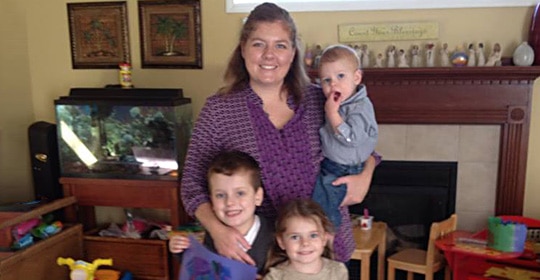Colleen Payne
When my husband and I decided it was time to start our family, I did my best to ensure a healthy pregnancy long before I became pregnant. I read books and message boards, cut back on unhealthy foods and habits and visited my doctor, who prescribed a prescription prenatal vitamin and healthy diet rich in folic acid, including beans, leafy greens and healthy grains.
I remember our 20-week ultrasound like it was yesterday. We were so excited to learn that our baby was a boy! But our entire world changed when the doctor said the words “spina bifida.” I had no idea what that was, except I had read in my pregnancy book that folic acid helps prevent it.
Spina bifida is a birth defect of the neural tube. In the most common and most severe form, Myelomeningocele, there is an opening in the baby’s back that leaves the spinal cord exposed and vulnerable to damage. It can cause paralysis, hydrocephalus (extra fluid on the brain), bowel and bladder challenges, and a host of other potential issues.
I tried to pinpoint exactly what I did wrong. But I came up with nothing. I had done everything right, including getting the recommended amount of folic acid through diet and prenatal vitamins which is critical for prevention, and I did not meet any of the risk factors for having a baby with Spina Bifida. Those mothers who are particularly at risk are obese, smoke, take certain seizure medications, have uncontrolled diabetes or experience a high body temperature sometime during the first 28 days of pregnancy when the neural tube is forming. I would later come to understand that it was probably a combination of environmental and genetic factors that causes my body to not process folic acid normally.
Research shows that approximately 65 million women of childbearing age in the U.S. are at risk of having a pregnancy affected by a neural tube defect. In the ‘90s, the U.S. Food and Drug Administration mandated adding folic acid to all enriched cereal grain products, also known as fortification, to help all women get enough folic acid prior to pregnancy. Because of this change, the prevalence rate of spina bifida has significantly declined. Today, approximately 2,660 babies are born with neural tube defects —spina bifida, anencephaly and encephalocele.
It turns out that our son Nate — spina bifida and all — was one of the very best things to ever happen to us. He made me a mother, he introduced me to a community of the most compassionate and strong people I’ve ever known and he has given a profound purpose to my life. Nate is seven now and in second grade, and his life is more full, happy and “normal” than I could have ever imagined when I was pregnant.
Sometimes people ask if I would take Nate’s spina bifida away if I had the chance, and I honestly don’t think I would. Spina bifida doesn’t define Nate, and it isn’t even the most interesting thing about him. But it is a part of who he is, and he would be a different person without it.
However, when my husband and I decided it was time to expand our family, we wanted to do everything we could to prevent health issues for our next child. Who wouldn’t? After some research and discussion with my doctor, I took a mega dose of folic acid supplementation and made broccoli, oranges and fortified cereals staples in my diet. Nate now has a little sister and a little brother. Neither has spina bifida, but both look up to Nate as their hero! He’s my hero too.
Colleen Payne is the Executive Director of the Spina Bifida Association of Kentucky, mom to three children and an advocate for spina bifida. Follow her blog What Nate Said Today.

